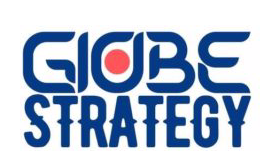Following the establishment of the World Trade Organisation in January 1995, American and European trade relationships were for a time characterised by ‘competitive interdependence’, as the US and EU simultaneously aimed to advance their commercial interests in third countries. Under conditions of competitive interdependence, trade actors resort to certain policy choices to gain advantage for their producers while restricting others’ ability to enter a market (Sbragia, 2010). In the last decade, however, European and American trade policymakers have faced the challenges of a more competitive world and the emergence of newer trade powers such as China. Both actors have veered away from multilateral deals as their preferred trade policy choices. In this paper, we use the Sbragia (2010) framework to analyse the trade policy shifts made by the EU and the US in the last decade. We argue that what had been a competitive interdependence relationship has recently changed to a trilateral structure in which both the EU and the US have focused their attention on countering Chinese competition. Moreover, China’s emergence has also pushed the US to reinvigorate the role of unilateralism and the EU to bolster bilateralism as they both seek to secure their commercial shares worldwide.>>>ClickHere>>>
Tag: competition
Sustainable Competitive Advantage
A sustainable competitive advantage occurs when an organization acquires or develops an attribute or combination of attributes that allows it to outperform its competitors. These attributes can include access to natural resources or access to highly trained and skilled personnel human resources. It is an advantage (over the competition), and must have some life; the competition must not be able to do it right away, or it is not sustainable. It is an advantage that is not easily copied and, thus, can be maintained over a long period of time. Competitive advantage is a key determinant of superior performance, and ensures survival and prominent placing in the market. Superior performance is the ultimate, desired goal of a firm; competitive advantage becomes the foundation. It gives firms the ability to stay ahead of present or potential competition and ensure market leadership. Read more on ⊕
Source: Boundless. “Sustainable Competitive Advantage.” Boundless Marketing. Boundless, 20 Sep. 2016. Retrieved 26 Nov. 2016 from https://www.boundless.com/marketing/textbooks/boundless-marketing-textbook/marketing-strategies-and-planning-2/the-strategic-planning-process-24/sustainable-competitive-advantage-136-4087/
Monopolistic Competition
Edward Chamberlin published the foundations of monopolistic competition in his 1933 book entitled The Theory of Monopolistic Competition. It is considered by some economists to have the same stature as John Maynard Keynes’s General Theory in revolutionizing economic thought in the 20th century. [8] The idea behind monopolistic competition is simple in form and powerful in practice.
Monopolistic competition involves many buyers, many sellers, and easy exit and entry, with slightly differentiated products. The sellers in these markets sell products that are closely related, but not identical. They have features that differentiate them from the competition. Usually, the buyers and sellers also have good information on the attributes of the products and the prices of the products in the marketplace. Indeed, most products and services are sold in markets characterized by monopolistic competition. The list includes jewelry, movie production, food, entertainment, many electronic gadgets and components, some durable goods, books, crafts, soda, houses, cars, consulting businesses, software, game consoles, restaurants, bars, and so forth.
A monopolist is a price setter and a business competing in a perfectly competitive market is a price taker. Most businesses strive to be price setters within a certain range of prices by offering a product that is closely related, but not exactly identical to other products in the market. The key strategy for competing in markets characterized by monopolistic competition is to offer products that are differentiated. The products are sort of quasi-substitutes, but they still resemble the original product or service. For example, Apple developed the iPod to compete with existing MP3 players.
According to standard economic theory, a purely competitive market has many buyers and sellers and each individual firm is a price taker. In essence, consumers and producers determine the market price for a product or service. In perfectly competitive markets, there are many sellers and buyers, and entry into and out of the market is easy. In a perfectly competitive market, companies sell their products at prevailing market prices where marginal revenue equals marginal cost. In actuality, every business would like to control the market, set the price, and be a monopolist. All businesses should strive to compete as a monopolist, even if it is in the short term. The goal is to rake in lots of money in the short term because your company is the only seller of a slightly differentiated product or service. [9] This will be short term (unless you have an exclusive patent on a product, own a large oil field, or have exclusive rights to providing cable or utility services) because successful products will always attract the competition. The only way to compete in contemporary markets is to become a serial entrepreneur, to constantly refine and reposition your products, and to function as a near-monopolist in the short term.
Source
Developing New Products and Services by the Saylor Foundation: Available on http://www.saylor.org/site/textbooks/Developing%20New%20Products%20and%20Services.pdf
